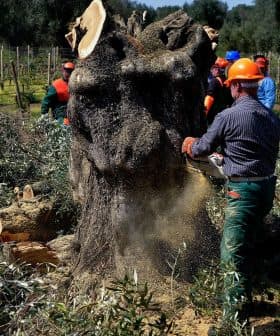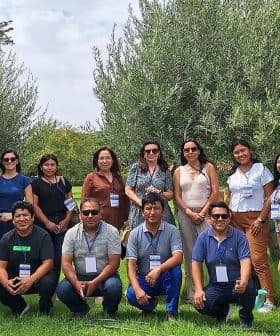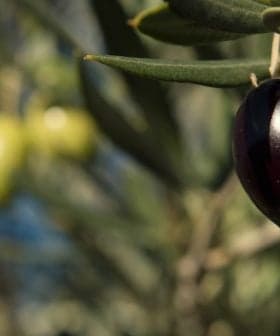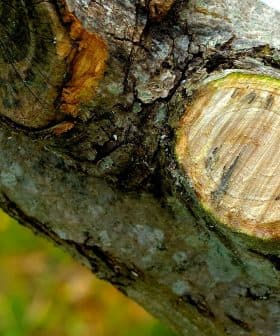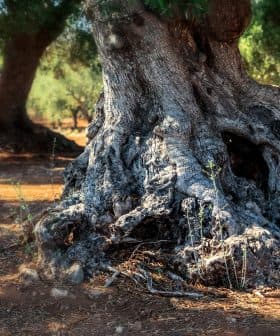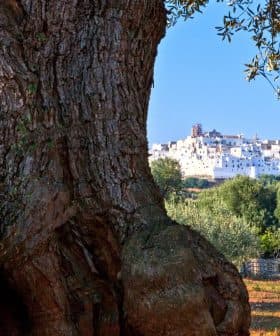Australian Growers on Alert After Xylella Fastidiosa Found in China

Australian olive growers are increasing preparations against Xylella fastidiosa after its spread was confirmed in China, prompting stricter precautions for imported nursery stock. Australian authorities are implementing emergency measures to regulate host nursery stock at the genus level, as Xylella fastidiosa is considered the country’s highest national priority plant pest.
Australian olive growers are stepping up preparations against the risk posed by the bacterium Xylella fastidiosa after its spread was confirmed in China.
“At the beginning of this year, the Australian government noticed a scientific paper reporting Xylella had been found in walnuts in China,” Michael Southan, the chief executive of the Australian Olive Association (AOA), told Olive Oil Times.
If Xylella fastidiosa were to enter Australia, eradication would be virtually impossible, as no treatment or cure exists.
“As a result, they conducted further investigations and confirmed that Xylella is indeed present there,” he added.
The AOA notified its members that China had been officially regarded as a high-risk country for Xylella fastisiosa.
See Also:New Spray Could Protect Olive Trees from XylellaIn response to the new situation, imported nursery stock from China that could potentially host Xylella fastidiosa will now undergo increased testing, treatment and pre-export certification.
“This means much stricter precautions around plant material entering Australia,” Southan said. “It’s now significantly harder to import plant material from China if identified as a significant or high-priority host for Xylella fastidiosa.”
Additionally, Australian authorities announced emergency measures to regulate host nursery stock at the genus level rather than the broader plant family level.
This update allows for more targeted inspections. Previously, controls were applied to all plants within an entire botanical family, including species not genuinely at risk.
Shifting to genus-level regulation enables inspections to focus exclusively on plants truly at risk.
Further measures implemented by local authorities will include revisions to trade permits.
According to Australia’s Department of Agriculture, Fisheries and Forestry (DAFF), Xylella fastidiosa “is Australia’s highest national priority plant pest. It’s an invasive bacterial pathogen causing devastating diseases in over 700 plant species.”
In a note, DAFF emphasized that “if Xylella fastidiosa were to enter Australia, eradication would be virtually impossible, as no treatment or cure exists.”
A team from Xinjiang Agricultural University in Urumqi conducted the research, which confirmed the presence of Xylella fastidiosa in several walnut tree leaves.
The scientists identified the multiplex subspecies of Xylella fastidiosa, which is considered low-risk for olive trees.
However, they did not exclude the presence of other subspecies, indicating a potential risk for various other plant species, including olives.
The bacteria can spread unnoticed for years before symptoms become evident, allowing ongoing epidemics to remain undetected for considerable periods.
Previous studies also suggest that when multiple subspecies coexist, genetic exchange is possible, potentially affecting the pathogen’s adaptation, host range and evolution.
The publication of this research alerted Australian authorities about the new risk, underscoring the lack of an active international communication channel for such developments.
“That’s interesting because considerable time passes between conducting research, writing a paper and having it approved for publication. This creates a high risk period,” Southan said.
During this period, no specific containment measures were taken.
In response to these findings, the Australian Olive Biosecurity Plan was updated. “The plan is part of Australia’s broader biosecurity strategy,” Southan said.
He noted that, for the olive industry, “we are signatories to the Emergency Plant Pest Response Deed, a documented agreement outlining our response to potential incursions of pests significantly impacting our industry or multiple industries.”
“As part of this, each signatory industry maintains a biosecurity response plan, a document informing the government and other industries about the most critical pests and diseases threatening the olive industry,” Southan added.
“It also outlines current measures to minimize the introduction of these threats and actions we would undertake if an incursion occurs, including our immediate response to reduce spread and prevent further damage,” he continued.
These biosecurity plans primarily focus on prevention and identifying potential risks at entry points such as ports and airports.
Among the identified risks are insects that could serve as vectors for the bacteria, including spittlebugs, which Australian researchers are currently studying.
“We do not have the exact insects known as Xylella fastidiosa vectors in Europe, but we have related insects within the spittlebug family that look somewhat similar,” Southan noted.
“They’re not identical, but we don’t know whether they could act as vectors if Xylella fastidiosa were introduced here,” he added, highlighting the complexity of potential scenarios.
Every year, Australia allocates increasing resources to prevent and mitigate agricultural threats. “Almost weekly, I encounter issues related to potential incursions. It’s becoming increasingly common,” Southan said.
Occasionally, threats are uncontrollable. “I recall years ago, a strain of rust affecting wheat arrived in Australia carried by the wind,” he said. “It traveled across the ocean and landed here. How can you prevent that?”
International trade in plants and goods, combined with the increased movement of people, further heightens biosecurity risks.
“Sometimes pests sneak in and escape, making it essential to have detailed procedures in place for managing new plant pests or diseases,” Southan said.
Olive Oil Times contacted the researchers in China involved in the study but did not receive a response by publication.



